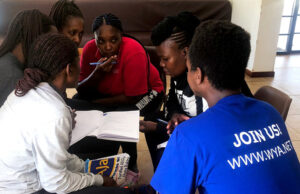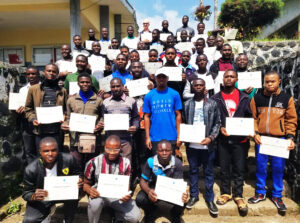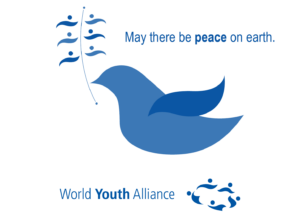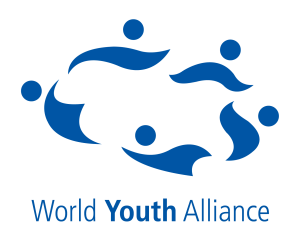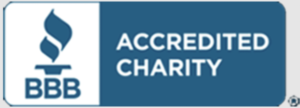At the beginning of February 2020, the All 4 Kids Center in Steubenville, Ohio began to implement the Human Dignity Curriculum to elementary school children in their local community. The classes, initially held in person, successfully shifted to a virtual format due to the pandemic.
What follows is a helpful narrative from Dr. Megan Reister, an Associate Professor of Special Education & Early Childhood of Franciscan University’s Education Department, and Elizabeth Boyle (Liz), a pre-service teacher studying at the same university. They detail their journey in acquiring and implementing the HDC in hopes that it will help educators who are interested in the program.
-
-
- Learning About the HDC
- Acquiring Funds for Purchasing the Curriculum
- The Community Networking Aspect of Finding a Location for the Classes
- Advertising to Families and Recruiting Pre-service Educators
- Training Pre-service Educators
- The Actual Teaching Component (Collaborative & Co-teaching)
- Overcoming Challenges Due to COVID-19 using Social Media and Technology
- Why We Said “YES” to the HDC, and Why Should You?
-
I. Learning About the HDC
Dr. Reister: At the start of the 2019/2020 school year, while at a one day Catholic School Leaders’ Summit held at Franciscan University of Steubenville where I teach in the Education Department, I learned about the Human Dignity Curriculum during a feature talk given by Anna Halpine from World Youth Alliance.
As I listened to Anna speak, I learned that the Human Dignity Curriculum was a program created by the World Youth Alliance that aims to educate children in grades K – 12 on personal human development. The main content curriculum focal points are on developing and maintaining healthy habits for life, to engage in good decision-making skills as contributing members or citizens in society, and to develop a strong sense of purpose and meaning within their lives. (The core themes in the HDC can be found here.)
The objectives and goals we had for the children who would take the HDC classes were:
- Students will learn to respect their bodies and those of others by defining what a good choice is in terms of being a kind citizen.
- Students will describe their place in the world or how they relate to others through discussion and completion of lesson activities.
- Students will name and identify different senses and emotions as they increase in self-awareness and self-determination.
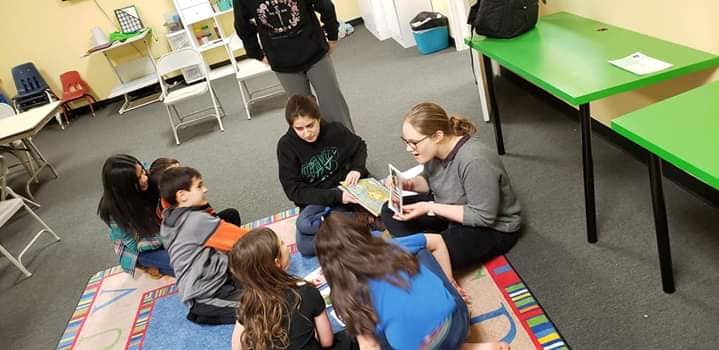
It was my hope that, fundamentally, through acquiring the HDC and offering it to the local children, the pre-service educators at Franciscan University of Steubenville and I would be teaching the children about respect! They would learn to respect their bodies and those of others. This is so needed especially in this area that sees drug use, violence, addiction, and poor decision-making happening on a daily basis.
Throughout the United States, schools have faced one of the most important challenges presented to the field of education: how to provide services to a diverse range of students with disabilities that are universal, evidence-based, and least restrictive. Each state within the United States has a unique set of obstacles that needs to be addressed in order to ensure each student is given an educational experience that meets his or her needs (Ohio Department of Education, 2019). Further, student populations are becoming more diverse with varying ethnical backgrounds, socioeconomic statuses, academic needs, and life experiences being brought into the classroom.
Ohio, specifically, has seen higher rates of children living in poverty, rising rates of homelessness, and more children requiring academic remediation (Children’s Defense Fund, 2010). It is our hope that through teaching HDC classes the objectives that are listed above, we can provide instruction that will make a meaningful impact on the children regardless of these challenges.
Liz: Dr. Reister introduced the student leaders of Chiron/Kappa Delta Pi (two student organization groups at Franciscan specifically for education majors), including myself, to the HDC at the beginning of the spring semester. During our initial meeting we discussed the benefits that the HDC would have on the community in Steubenville. The HDC is a tool that can teach children about their own dignity, the dignity of others, and how to respect themselves as well as others. Educating students in this way is necessary in Steubenville where drugs, alcohol and poverty affect the lives of many children. We discussed the possibility of improving young children’s perspectives of their bodies, fellow humans, and the value that the HDC would bring to the community and how we could be part of the growth (Isenberg Packer & Renck Jalongo, 2013; Panagiotaki & Nobes, 2014). I was then able to learn more about HDC through our training.
(BACK TO TOP)
II. Acquiring Funds for Purchasing the Curriculum
Dr. Reister: I inquired about obtaining the Human Dignity Curriculum from the World Youth Alliance to be able to teach classes and learned that while the curriculum is usually $380 per grade level, the creators of the curriculum were willing to sell it for $35 per grade level.
Now, all I had to do was come up with the $70 to purchase the curriculum. So I wrote and applied for a Classroom Teacher Grant through Kappa Delta Pi to obtain funding to purchase the materials. Kappa Delta Pi is an International Honor Society in Education that was founded in 1911 (Kappa Delta Pi, 2020). It was one of the first discipline-specific honor societies and the Education Program at Franciscan University of Steubenville recently celebrated 25 years of having a chapter of Kappa Delta Pi on its campus that functions in conjunction with the Chiron student advisory board. Having been a co-advisor or advisor of Franciscan’s chapter of Kappa Delta Pi, I was aware of the Classroom Teacher Grant and decided to apply for it!
Thankfully, I was awarded the funds and able to use the funds to purchase two grade levels’ worth (Kindergarten and 3rd grade) of the curriculum, was able to complete the training, and began to advertise the classes. I spent about $10 to advertise the event through creating and distributing copies of flyers/calendars advertising the classes geared toward Kindergarten and 3rd grade. The classes were capped off at 20 students per grade level and we had folders that were personalized with name tags for the students to keep their papers in and give them pencils so that school supplies were provided. The curriculum itself contains the supplemental materials but I was able to print and laminate items due to the funds received from the grant. I wanted to do this to ensure the curriculum is kept in good condition and lasts. The cost for the school supplies, printing, and lamination was about $30.
(BACK TO TOP)
III. The Community Networking Aspect of Finding a Location for the Classes
Dr. Reister: As I sat in the professional development training and learned about the HDC, I immediately thought of the brand new All4Kids Activity Center that had opened this past year. This center is for families and children of all socioeconomic status levels and needs. It strives to provide a place at which individuals can learn and express themselves through literacy, art, dance, music, physical fitness, and education classes (All4Kids, 2020)! All4Kids attempts to provide enriching experiences for both children and adults and the owners of the activity center were very receptive to hosting the classes when I approached them about this possible course offering. One of the owners and I attended a virtual meeting with one of the creators of the curriculum to learn more about what bringing a class to the activity center might entail. I was thankful that WYA and All4Kids agreed that offering classes on the HDC would be beneficial and would help All4Kids to provide yet another enriching learning experience to children and families!
I was so thankful and grateful for the chance to collaborate with All4Kids to offer the Human Dignity Curriculum as an alternative to making better choices.
(BACK TO TOP)
IV. Advertising to Families and Recruiting Pre-service Educators
Dr. Reister: During the Catholic School Leaders’ Summit talk when I first learned about the Human Dignity Curriculum and began thinking about the possibility of creating classes and teaching the classes at All4Kids, I also thought about how wonderful it would be to obtain the curriculum, be trained in it, and then to train the pre-service educators I work with in my teacher preparation program at Franciscan University of Steubenville in the curriculum so that they could teach the lessons as well. It is one thing to be taught about a curriculum or resources to use in classrooms and within the community but it is entirely different to actually have the opportunity to teach using the materials and to actively engage in the learning and authentic teaching experiences and I was excited by the idea of working to make this happen for the pre-service educators (Piantanida, McMahon, & Llewellyn, 2019; Vacca, Vacca, & Mraz, 2014).
Someday, it would be amazing to think about perhaps these pre-service educators then bringing the curriculum to their schools where they will become in-service teachers and scholar-practitioners thereby reaching even more children through their teaching of the human values in the future!
Recruiting for families to sign up their children for classes occurred through social media posts, flyers that were shared at All4Kids, and by word of mouth thereby using a snowball sampling method in our efforts (Patton, 2002). Additionally, a blurb was sent out through Franciscan’s staff and employee weekly electronic bulletin informing them of the opportunity to sign up their children for the classes that would be taught by Franciscan’s own pre-service teachers and an Education professor.
An announcement was posted via the online learning management system in an online student group created just for Education Majors letting the pre-service teachers know of this opportunity to get involved in the community and to co-teach this amazing curriculum to young children. Flyers were hung up on campus and a blurb was published in the Education Program’s monthly newsletter encouraging pre-service teachers to get involved.
An informational session was held to learn more about what the Human Dignity Curriculum was and about the location of where the classes would be held. It was determined that the Kindergarten curriculum would be the one to be used for this first round of teaching based on the ages of the children who had already signed up for classes.
A training session was held after the informational session where the pre-service teachers committed to teaching for the semester. Together, dates were chosen for teaching the classes at All4Kids. These dates were put on a new flyer that was distributed to families, was posted at All4Kids, and was also published on social media. We were ready to get started with co-teaching!!!
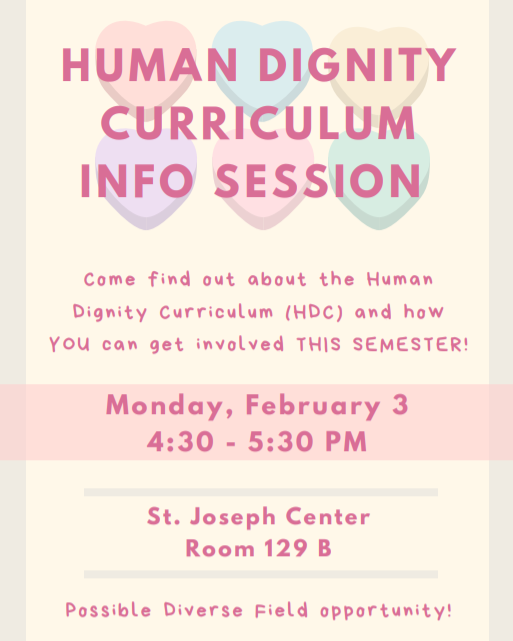
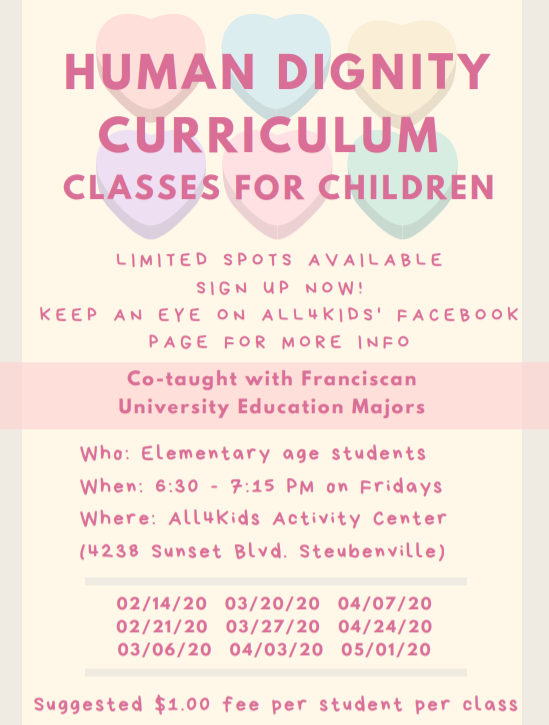
Liz: We began advertising to families on Facebook through the All4Kids webpage with a description of what the class is about and when it will occur. Chiron/Kappa Delta Pi then held an informational session on the HDC briefly and invited those pre-service teachers who may be interested in teaching to join for the training. Reflecting on the way that we recruited pre-service teachers and families to participate there are several ways that we can improve. In an effort to keep the momentum going in the community we need to improve the way that we organize and advertise for the HDC program at All4Kids. To improve our organization we have begun to create videos that demonstrate a few mini-lessons and songs that are used within the HDC. In an effort to continue organizing the way that we present the HDC to pre-service teachers and parents we plan to create a google classroom. The google classroom will house the videos we have made thus far and tips that we have for future pre-service teachers who chose to teach the HDC. Through our organization and advertising we hope to keep the momentum going in the Steubenville community and provide opportunities for pre-service teachers and parents in the future.
(BACK TO TOP)
V. Training Pre-service Educators
Liz: I went into the informational training session feeling excited to learn more about the HDC. Initially when I learned about the curriculum I did not have a clear idea of what it was about or how we would be teaching it in the community. The amount of information that was given in the introduction was overwhelming because at the time I was unable to imagine what the HDC would look like in Steubenville specifically. I was curious to learn more about the curriculum even though I did not know exactly what it was at the time. The training provided me with a basic understanding of the curriculum and the potential benefits it would provide for the students in the community. Reflecting on the introduction and training that I participated in I believe the best way to learn and fully understand the curriculum is through observation and hands-on experience (Schön, 1987). I was able to see, albeit for a short period of time, how the HDC helped children to learn more about their dignity and the dignity of the children around them.
(BACK TO TOP)
VI. The Actual Teaching Component (Collaborative & Co-teaching)
Dr. Reister: Once it was decided which pre-service educators were committing to teaching the classes for the semester, they were invited to join the Google Doc that housed the Kindergarten curriculum for Human Dignity Curriculum.
In the two weeks leading up to teaching the first class we all read the first week’s lesson plan on the Google Doc, contributed to the conversation and planning by signing up for sections of the lesson, and mapping out what the class would look like. I printed and laminated any needed materials and gathered the school supplies.
This was the flow for the three classes we were able to teach prior to COVID-19. We would prepare by reading the upcoming week’s lesson on the Google Doc, signed up via the Google Doc for which parts of the lesson we wanted to, and come prepared to carry out the instruction.
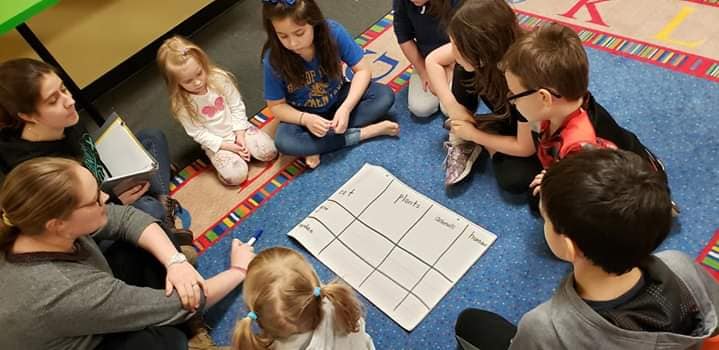
There were times during the actual teaching of the lessons that we had to step in for our co-teachers due to behavior management or timing issues. I remember, during one lesson, one of the co-teachers had to cover my section of the lesson when my then three year old had a bit of a meltdown and I had to shift from teacher to mom in the moment. 😉 That was the beauty of this opportunity to carry out teaching Human Dignity Curriculum in the community in this way. Not only were the children learning and growing from what was being taught to them but the pre-service teachers were gaining real world practice and experience in teaching strategies and methods, planning, and making instructional decisions in the moment! This form of collaboration is so valuable for the pre-service educators to begin building skills for sharing and collaborating prior to graduation (Compton et al., 2015; Reister & Olson Beal, 2020).
At the conclusion of the classes, we had planned to evaluate whether or not the objectives had been met through a parent satisfaction survey, informal interviews with the children, and (pre-service) teacher observations/feedback that would have been conducted. This, in part, would have been done to evaluate the proposed use of grant dollars in acquiring the Human Dignity Curriculum and teaching the students in the classes that were set up at All4Kids. However, the cancelling of in-person classes due to COVID-19 put those plans to a halt.
Liz: Once it was decided who would be able to help teach the HDC for the semester we were all able to view the curriculum and read through it whenever we wanted. The preservice teachers, including myself, discussed the sections of the lesson plans that we would be comfortable teaching. For every lesson we ensured that all of the individual sections were covered and the pre-services teachers became experts on their section. When it came time to execute the lessons we were all prepared to the best of our ability. There were times in which we had to improvise or change our course to include distracted students or answer questions. Co-teaching was a unique experience that we do not often experience as pre-service teachers. There is great value in being able to work alongside fellow pre-service teachers as we are able to learn and grow from and with each other. We all learned the importance of communication as we discussed who would teach what in the class and even as we taught the class. Communication can help to create a smooth classroom environment that we were working toward before our classes were cut short.
(BACK TO TOP)
VII. Overcoming Challenges Due to COVID-19 using Social Media and Technology
Liz: When COVID-19 ended our in person teaching Dr. Reister asked the preservice teachers if we would be willing to create short videos. The videos are mini-lessons or activities that are part of the HDC and they were posted on Facebook. The videos are available to the community and can be viewed at any time. There are nine videos in total including an introductory video and a promotional video that provide the viewer with an understanding of the HDC.We plan to create the Google Classroom that will be available to future pre-service teachers who want to continue teaching the HDC in Steubenville.
[su_youtube_advanced url=”https://www.youtube.com/watch?v=T0yY640SKB0″]
(BACK TO TOP)
VIII. Why We Said “YES” to the HDC, and Why Should You?
Dr. Reister: Alongside our student leaders within the Education Program at Franciscan University of Steubenville, I help plan community and campus events for pre-service teachers to practice leadership and teaching skills in a variety of events that promote literacy, STEM concepts, and service each semester.
The thought of specifically training some of the pre-service teachers at Franciscan in this particular wellness approach that utilizes the Human Dignity Curriculum excited me and seemed like an amazing opportunity for both the college and school-aged students alike! My hope is that not only would our pre-service educators be interested in learning more about this curriculum and teaching it to our local children here in our town but to also take what they have learned and apply it elsewhere in their own classrooms someday. Who knows, maybe they may even advocate for implementing the Human Dignity Curriculum in their future schools one day as well?!
It is my hope through learning the concepts presented in Human Dignity Curriculum, we could truly celebrate teaching through promoting a shared love of reading for school-aged children, their families, and other members of the community as they learn the health and nutrition concepts in a cross-curricular way through the Human Dignity Curriculum. My long-term goal as a practicing educator in the teacher preparation program is to continue serving as a mentor to help form student leaders and pre-service teachers into the best teachers and scholar-practitioners they can be through following their vocations and participating in different projects and student outreach support initiatives such as this one that was formed to bring Human Dignity Curriculum to Steubenville, Ohio.
Liz: I chose to say “YES” to the Human Dignity Curriculum because I believe that there is a great need for young children to be educated about their dignity and what it means to have dignity. I have worked in some schools and seen firsthand the lack of education that the youth receive on the topic of their dignity. I hoped to be able to see the change in the children we were teaching as they realized that they had dignity. I enjoy spending time with children and teaching them about new things and just watching them light up with excitement for learning. The HDC is a valuable curriculum and when I was given the opportunity to partake in teaching I knew that I would not only be teaching but I would also be learning. I was able to watch as Dr. Reister worked hard to bring the HDC to Steubenville and I was inspired to help and partake in something that could lead to change in the community.
(BACK TO TOP)
[su_divider top=”no” size=”1″ margin=”10″]
References:
All4Kids. (2020, July 1). All about All4Kids. https://www.allforkidscenter.com/
Children’s Defense Fund-Ohio. (2018). Ohio’s kids count: 2018 Data book. Retrieved from
https://cdfohio.org/wp- content/uploads/sites/6/2018/12/Ohio_with_back-1.pdf
Compton, M. V., Appenzeller, M., Kemmery, M., & Gardiner-Walsh, S. (2015). Itinerant
teachers’ perspectives of using collaborative practices in serving students who are deaf or
hard of hearing. American Annals of the Deaf, 160, 255-272.
Isenberg Packer, J. & Renck Jalongo, M. (2013). Creative Thinking and Arts-
Based Learning. Upper Saddle River: Pearson.
Kappa Delta Pi. (2020, July 1). About KDP. https://www.kdp.org/index.php
Ohio Department of Education. (2020). District, school, and teacher support toolbox.
Retrieved from http://education.ohio.gov/Topics/Learning-in-Ohio/Literacy/Ohio-s-
Literacy-Toolkits/District-School-and-Teacher-Support-Toolbox
Panagiotaki, G., & Nobes, G. (2014). Cultural influences on children’s understanding of the
human body and the concept of life. British Journal of Developmental Psychology, 32(3),
276–290. https://doi.org/10.1111/bjdp.12039
Patton, M.Q. (2002). Qualitative research and evaluation methods (3rd ed.). Thousand Oaks,
CA: Sage Publications.
Piantanida, M., McMahon, P.L., & Llewellyn, M. (2019). On being a Scholar-Practioner:
Practical wisdom in action. Pittsburgh: Learning Moments Press.
Reister, M. & Olson Beal, H. (2020, June 10). Sharing & collaborating: Two skills that should
be in every educator’s toolbox! Teaching and Learning in the Age of COVID-19.
http://scholarpractitionernexus.com/teaching-and-learning-in-the-age-of-covid-19/
Schön, D. A. (1987). Educating the reflective practitioner: Toward a new design for teaching
and learning in the professions. San Francisco: Jossey-Bass.
Vacca, R. T., Vacca, J. A. L., & Mraz, M. (2014). Content area reading: Literacy and learning
across the curriculum (11th ed.). Upper Saddle River: Pearson.

